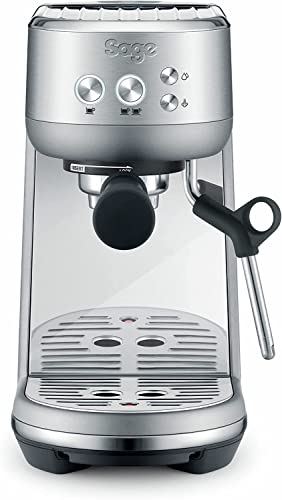How Does Machine Espresso Work?
The machine espresso utilizes precision pressure, and a filtering technology that is amazing to create the coffee you enjoy. What exactly does it work?
Espresso is made by forcing hot water under pressure through finely ground coffee. The process is similar to making drip coffee but the difference is in the pressure.
The Group Head
As the name suggests, the group head is the place you place your portafilter while making espresso. It disperses water into the portafilter, and then regulates the pressure during the extraction. There are several different types of group head each with its distinct advantages and disadvantages. Some are focused on temperature stability, whereas others on pre-infusion options, and others are designed to control the lever. There are even some that contain a variety of features, such as the E61 that is to be the most popular among baristas due to its capacity to provide multiple benefits in a single package.
As you can see in the image above the group head is made up of many notches in which you can place your portafilter and then twist it with your hands to secure it. A gasket made of rubber is positioned in the notches to make a seal when you insert your portafilter. The notches permit the precise placement of the portafilter. This is crucial for an efficient extraction.
The group head not only lets the portafilter to be inserted easily but also maintains the same temperature. It does this by cycling hot water through the brew basket, and around the portafilter to ensure that it's always at the right temperature for extraction. It is crucial to keep in mind that even a slight variation can mean the difference between a decent and a excellent espresso.
The Pump

In contrast to manual piston machines which use a lever to pressurize water, the rotary espresso machines use motorized pumps to supply the nine atmospheric bars of pressure necessary to extract espresso. This pressure is generated by pumping water through a heat-exchanger and then through the ground coffee.
Pumps tend to be more affordable and last longer than piston-driven machines. However, both kinds of machines can deteriorate due to excessive use and poor cleaning. They also make mechanically complex and can lead to a high price tag on even the most basic models.
Some espresso machines can eliminate the pump completely and make use of steam pressure to make espresso. This can result in over-extraction because the boiler that produces steam also heats the water until it comes to a boil. The machines must also constantly rebuild their pressure in between cups. This takes energy and time.
A majority of espresso machines utilize a rotary or vibration pump. A vibration model employs the vibrating disk to create pressure, while the rotary model pushes hot water through the ground at a fast speed. Both machines can make great espresso but rotary machines are quieter, more durable and less likely to fail.
The Boiler
The boiler is what heats the water to the right temperature to extract. The steam that is produced reaches the portafilter that contains ground espresso beans and is then funneled down into the cup. The steam causes pressure to push through the grounds of the coffee. This results in a whipped-up top of the espresso. This is one of the hallmarks of a great espresso.
There are three kinds of espresso machines, each with a different type of pump and brew temperature. There are small espresso machine to control the strength of the brew and the size of cup that can be made by the machine.
The earliest espresso machines were steam-based. They employed a single boiler to make both brew and steam, but the pressure they could create was minimal - two bars of atmospheric pressure, at most. This resulted in the coffee tasting bitter and burnt. This is the reason Milanese manufacturers Luigi Bezzerra and Desiderio Pavoni invented the modern espresso machine.
The most commonly used espresso machine is a semiautomatic one with an electric pump. These are the things people think of when they think of an espresso machine. With a semi-automatic machine, you need to grind the beans and tamp them by hand. However, the pump provides regulated water flow and pressure. This is an excellent compromise between human touch and mechanized quality.
The Filter
Espresso machines typically use filters that separate the grounds of the coffee from hot water. The filter is also a vital component of the machine's temperature control, as it helps prevent overheating.
A filter also helps with flavor because it allows for the beans to flower for a longer period of time. This allows the beans to release their nuances, and allows for a better extraction.
However, it is important to remember that even a good filter can result in a poor cup of coffee, since the quality of the beans and extraction is still essential.
It's in this area that the magic happens. This is the reason why espresso tastes so good. The grouphead (also called the brewhead) is where you place the portafilter, which is the thingy used to place the coffee grounds in, when making espresso.
Steam-driven espresso machines use hot water heated in an airtight container to create steam. The steam then pushes hot water through the grounds of coffee under high pressure. These kinds of machines are typically less expensive and simpler to maintain than pumps-driven models. However, they are limited in their ability to provide the ideal conditions for brewing since they are only operating at 1-1.5 bars of pressure. The perfect shot requires 9-10 bar.
In recent years, compressed air pump-driven espresso machines have been gaining popularity. They use an air-compressor to force hot water through the ground and are more mobile than steam-driven electric espresso machines.
